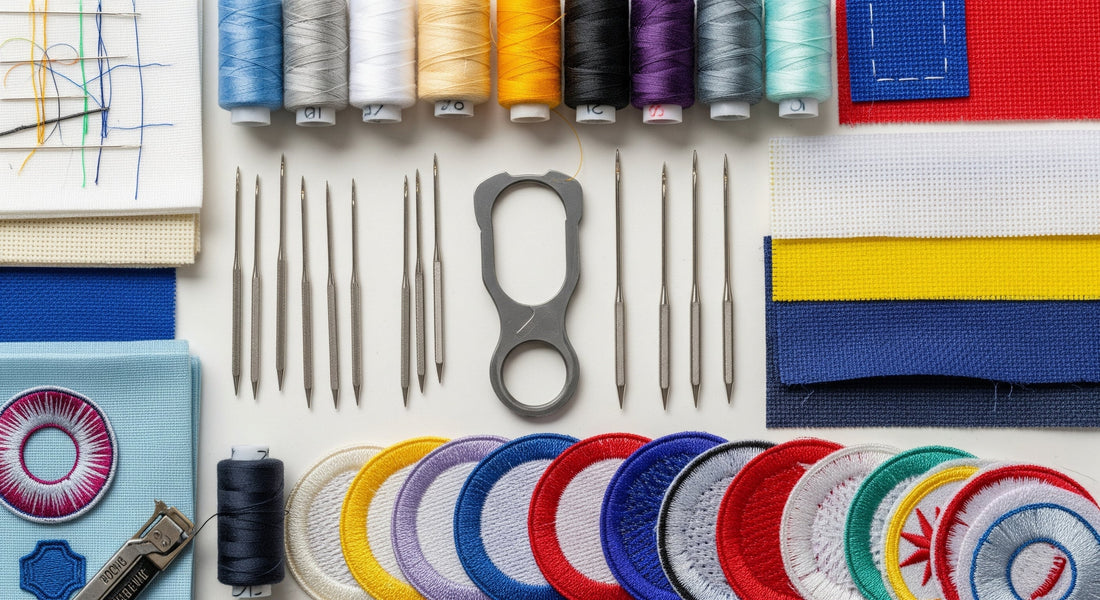
Embroidery Fixing & Reinforcement
Share
How to Secure, Strengthen, and Extend the Life of Your Embroidery Projects
Whether you’re creating hand-stitched hoop art or machine-embroidered garments, ensuring that your design holds up over time is essential. This guide offers practical strategies to reinforce embroidery, fix minor damage, and support delicate fabrics during and after stitching.

1. Reinforcement During Stitching
Stabilizing your project from the start can help prevent unraveling and distortion.
Techniques:
· Use underlay stitches (for machine embroidery) to anchor dense areas.
· Backstitch endings in hand embroidery to lock thread securely.
· Layer stabilizers or interface backing for heavy or wearable fabrics.
· Double-thread high-friction areas (e.g., shirt cuffs or bags).
2. Securing Loose Stitches
Sometimes stitches become loose or catch on something. Here’s how to secure them:
· Gently pull excess thread to the back of the fabric and knot.
· Use fray check or clear fabric glue to seal delicate spots.
· Re-stitch over damaged areas using the same technique or a denser version.
· Use invisible thread or matching floss to disguise reinforcement.

3. Patching and Repairing
If a portion of your design is damaged:
· Trim loose threads carefully.
· Use iron-on stabilizer or fusible interfacing to back the area.
· Recreate missing stitches manually or digitally (if using software).
· For sentimental or heirloom items, use embroidery mending patches or stitched “invisible repairs.”
4. Reinforcing Finished Pieces
For projects that will be washed, stretched, or worn:
· Use fusible backing to protect the reverse side.
· Apply a lightweight interfacing over the entire stitched area.
· Frame delicate pieces behind glass or in a hoop with a backing.
· For garments, stitch a lining behind embroidered areas to protect skin and thread.

5. Best Practices for Longevity
· Avoid over-handling during stitching
· Store completed projects flat and away from moisture
· Wash gently and air dry whenever possible
· Re-check older projects for signs of fraying or loosening
Final Thoughts
Embroidery can last a lifetime—if it’s reinforced with care. Whether you're securing each stitch as you go or performing gentle repairs, these techniques will help your work withstand the test of time, use, and love.